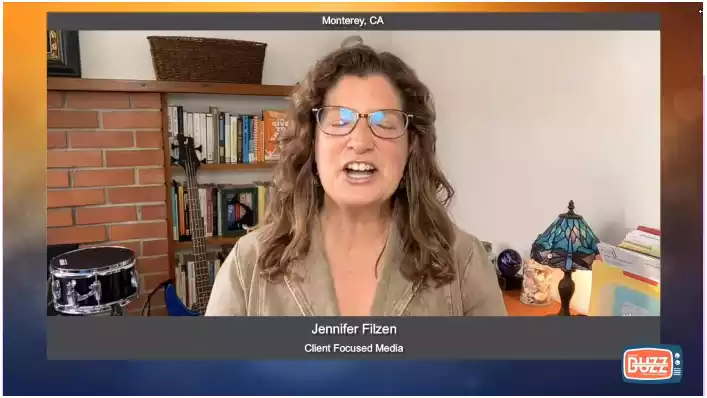Bridging the Gap: Enhancing Communication in Prior Authorization Processes
Discover how enhancing communication in prior authorization processes can streamline approvals, minimize delays, and enhance patient care. Dive into effective strategies for better collaboration between healthcare providers and insurers. Read more to learn how you can revolutionize your practice.

Understanding how long prior authorization takes for medication is crucial in this evolving landscape. The time frame for prior authorization can vary, but generally, it takes 24 to 72 hours for urgent requests and up to 7 to 10 days for non-urgent requests. These time frames ensure that the necessary approvals are obtained without significant delays in patient care.
Let’s explore the top solutions to streamline this process!
Table of Contents
Enhancing Communication in Prior Authorization Processes

The Importance of Communication in Prior Authorization
Prior authorization involves healthcare providers, insurance companies, payers, and patients. Continuous communication among these parties is necessary for approvals and care delivery. Failure to communicate effectively can lead to treatment delays that negatively impact patient outcomes. Due to the nature of the process, effective communication is crucial in authorization. Healthcare providers must navigate payers’ requirements and guidelines, which can cause confusion and delays without clear communication. Patients may also suffer from communication issues by experiencing delays in approvals and encountering obstacles to accessing care services.
In addition, effective communication during the authorization process can also help avoid claim denials or rejections, which ultimately lessens the administrative burden and costs for healthcare providers and payers alike. By establishing lines of communication, providers can grasp the payer’s criteria, leading to more precise submissions and higher chances of approval.
Understanding How Prior Authorization Works
Definition and Purpose
Health insurance companies use prior authorization to assess whether they will cover a treatment, service, or medication. The primary aim is to promote evidence-based care, reduce expenses, and manage costs by ensuring that treatments are medically necessary and delivered on time.
Key Players Involved
Multiple parties play roles in the authorization process:
- Healthcare Providers: This includes physicians, nurses, and administrative personnel who initiate and follow up on authorization requests.
- Payers: These are insurance companies or other entities responsible for evaluating and either approving or denying authorization requests.
- Patients: Individuals seeking approval for their treatments who face the repercussions of delays or denials in authorization.
Common Barriers and Challenges
The PA process is fraught with challenges that can hinder effective communication, such as:
- Complexity and Variability: Different payers have varying criteria, forms, and procedures which can be difficult to navigate.
- Administrative Burden: Physicians and staff often spend significant time and resources managing PA requests.
- Delays in Care: Approval processes can be slow, leading to delays in treatment that may adversely affect patient outcomes.
The Importance of Communication in PA
Impact on Patient Care
Effective communication is vital in ensuring that patients receive timely care. Delays due to poor communication can lead to worsening health conditions, increased patient anxiety, and reduced satisfaction with the healthcare system.
Effects on Healthcare Providers
For healthcare providers, ineffective communication can lead to increased workloads, frustration, and potential burnout. It also impacts their ability to deliver quality care and maintain patient satisfaction.
Influence on Payers
Insurance companies also benefit from clear communication as it ensures that their criteria and processes are understood and followed correctly, reducing the need for re-evaluation and appeals.
Strategies for Enhancing Communication
Implementing Clear and Detailed Guidelines
Providing comprehensive guidelines for PA requests can reduce confusion and errors. These guidelines should include:
- Detailed criteria for approval
- Step-by-step submission procedures
- Expected timelines for decision-making
Using Technology to Enhance Information Sharing
Technology has a role in enhancing communication in the prior authorization (PA) processes. Strategies involve:
- Electronic Health Records (EHRs): Integrating PA requests with EHR systems to streamline the flow of information.
- Centralized Portals: Establish portals for submitting and monitoring PA requests.
- Automated Alerts: Implementing computerized systems to inform stakeholders of request status updates.
Training and Educating Staff Members
Educating healthcare providers and administrative staff about PA procedures and requirements can improve efficiency. Regular training sessions and updated resources can keep the team informed about changes and best practices.
Promoting Collaborative Partnerships
Cultivating relationships between healthcare providers and payers can result in a PA process. Regular meetings and open lines of communication help address issues and mutual understanding.
Defining Clear Accountability Channels
Clearly outlining roles and responsibilities within the PA process can prevent misunderstandings and ensure the timely completion of each step. Accountability structures may consist of the following;
- Appointed PA coordinators
- Clear documentation protocols
- Established paths for addressing issues
I'm very thankful for Portiva who I know is looking after my practice while I'm gone the virtual assistants can manage prescription refills, documents they can triage patients and just kind of answer administrative questions and they can handle a lot on their own. But also, they're very good about contacting me if there's any emergency or anything I need to attend to. So I'm very thankful for Portiva they can help almost any provider almost anywhere and it really allows for some good work-life balance as I'm getting to experience right now at my family farm so I'm very thankful for Portiva and I'm very happy to use their services"

Board Certified Family Medicine Physician

Portiva's Virtual Medical Assistant - I have all the support I need. There's somebody checking my email, any patient messages. Patients are still able to schedule and handle any scheduling issues and any kind of billing that needs to still go through. Portiva hands handles it all for me. I have support i have somebody that I can access 24/7 pretty much. It's all very seamless. If somebody has an emergency or needs a medication called in. I know that the va's at portiva will handle that for me.

Board Certified Family Medicine Physician

Real-life Examples and Success Stories

Enhancing PA communication involves integrating streamlined PA processes within an extensive healthcare network. By introducing a platform and offering regular employee training, the network reduced approval times significantly and enhanced patient care outcomes.
Key Takeaways
Based on real-life scenarios, key takeaways emphasize the significance of engaging stakeholders, incorporating feedback loops, and utilizing technology to facilitate communication.
Future Perspectives and Considerations
Policy Adjustments
Implementing policy reforms to standardize PA procedures across payers could simplify the process and alleviate burdens. Advocacy for reforms is crucial at both national levels.
Ongoing Education and Training
In light of the evolving healthcare environment, continuous education and training for all stakeholders will be essential to maintaining policies, practices, and technologies.
Conclusion
Ensuring effective and efficient communication is vital in aspects of patient care that benefit both individuals receiving care and healthcare providers. By following practices and embracing approaches, we can enhance communication in patient assistance processes and elevate the quality of patient outcomes. Let’s strive to improve our communication methods to deliver care for patients. Together, we can enhance the efficiency and effectiveness of patient assistance processes for everyone involved. Let’s maintain a dialogue and work towards advancements in this crucial healthcare area. Thank you for taking the time to read this!
To learn more about health plan that can enhance your medical practice. Discover more about Portiva and unlock a world of possibilities by visiting our homepage today!
- Mastering compliance in prior authorization
- Systemic efficiency in prior authorization
- Multidisciplinary strategies for prior authorization
- Impediments for prior authorization
- Customizing prior authorization processes
- Education and support in prior authorization
- Effective communication in prior authorization
- Streamlining healthcare with electronic prior authorization
- Understanding patient rights in prior authorization
- Prior authorization regulatory compliance
- Financial strain of prior authorization on medical practices
- Comprehensive provider training in prior authorization
- Hidden costs of prior authorization
- Healthcare operations with strategic prior authorization plans
- Preventing prior authorization mistakes
- Key strategies for improving prior authorizations
- Significance of quality assurance in prior authorization
- Examining prior authorization’s role in healthcare accessibility
- How prior authorization affects patient access to healthcare


